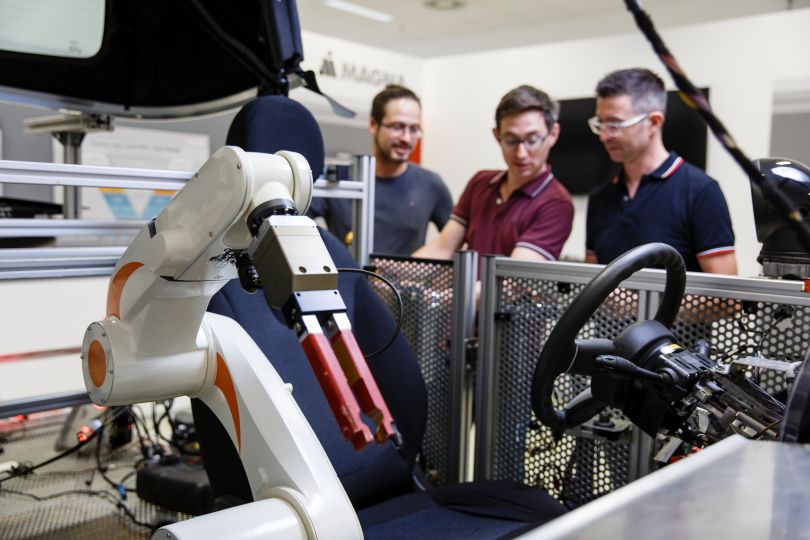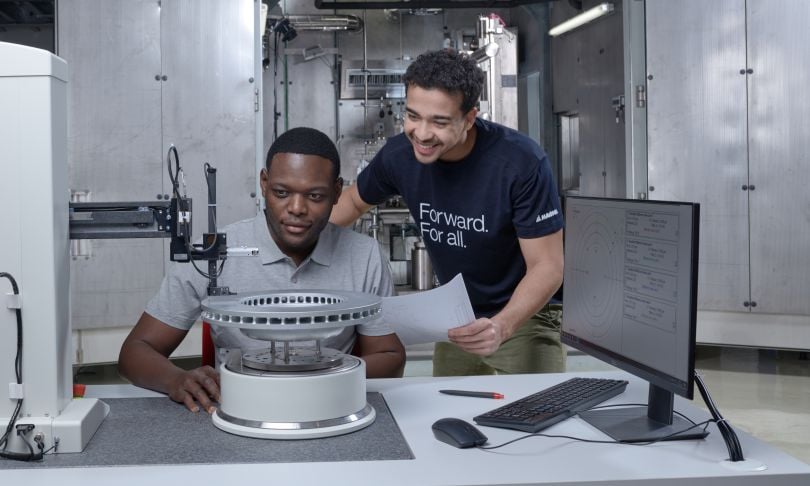A shift in perspective is fueling powerful change for automotive manufacturing giant Magna International as it poses the question: “How do you look at waste and see it as a resource instead?”
The company is pushing ahead toward a goal of net-zero emissions by 2050 and ambitious near-term sustainability goals including 100 percent renewable electricity use by 2030. In these efforts, every element of the business offers opportunities to reimagine how work gets done, according to Global Director of Sustainability and Energy Ahmed ElGanzouri.
For ElGanzouri, a walk through one of Magna’s buildings offers insight into exactly how impactful this change in perspective can be.
From hands-off changes, like automating the daily cycle of comfort heating and cooling within a facility, to more intensive approaches, like energy monitoring, many changes offer both sustainability and business benefits.
“By utilizing energy monitoring within the facility, leadership and management can see in real time where energy is being used and immediately react, which has yielded quality improvements, as well,” he said. “If they know a piece of equipment is acting a bit wonky in terms of energy consumption, they can look into it and implement preventive maintenance before something actually shuts down.”
Meanwhile, some divisions within manufacturing have started implementing waste heat recovery.
ElGanzouri explained, “We are able to direct the air from places like a paint shop, which can be very hot, and instead of leaving it to float around there, we can suck that air up and utilize it elsewhere to heat the plant in winter.”
Engagement from leaders across Magna’s manufacturing facilities is what made these changes and the resulting leaps toward meeting sustainability goals possible, according to ElGanzouri. In order to capitalize on the excitement from leaders across the team, Magna began tapping “energy champions” to help drive implementation and improvement.
“Identifying problems can be easy, but finding ways to solve them within our calendar year and within the same budget can be challenging,” he said. “But momentum has been building as people identify projects and go beyond identification to full implementation.”
“Identifying problems can be easy, but finding ways to solve them can be challenging — but momentum has been building.”
Earlier this year, Magna committed to reducing energy consumption by 5 percent, with a stretch goal of 10 percent energy-intensity reduction in 2023. According to ElGanzouri, the company is on track to achieve the stretch goal by the end of the year. “Honestly, I was hoping to reach five,” he admits. “And with the commitment from our team, being able to hit our ambitious targets is really exciting. We’ve seen over 900 energy-saving projects implemented in 2023.”
TRANSFORMING WASTE INTO RESOURCES
Internal byproducts aren’t the only waste Magna is transforming into resources — the company is also working with partners to divert materials from landfills and develop recycled fibers for use in building new car components. For now, those fibers are being utilized to build front-end modules, the plastic component that carries a car’s bumper. The diverted landfill materials are compressed into small pellets called UBQ, which serves as a plastic replacement in the component. Currently, the component uses 5 percent UBQ, and Magna is exploring the possibilities UBQ offers in building additional pieces like door carriers, wind guides and skirts for transport trucks, according to reporting from Newsweek.

Envisioning the Future of Mobility
Beyond the goals set for this year, Magna has a long-term vision: reaching net-zero emissions by 2050 — a goal ElGanzouri calls the “overarching umbrella” for the company’s sustainability mission.
“Sustainability touches everything and everyone across the company, and my role is to understand and help others understand how we can connect the dots to build a more sustainable future,” ElGanzouri told Built In. “Magna is perfectly situated to bring people together — suppliers, raw materials providers, customers and government partners — to serve as a strategic nexus across our global organizational ecosystem.”
“My role is to understand and help others understand how we can connect the dots to build a more sustainable future. Magna is perfectly situated to serve as a strategic nexus across our global organizational ecosystem.”
The greatest challenge also offers ElGanzouri the most excitement: identifying opportunities to reduce emissions in Magna’s products, across their entire lifecycle.
“We have the opportunity to reshape the industry by transforming every stage, from sourcing and supply chain management, to manufacturing, product usage and end-of-life,” he said. “Beyond building an electric vehicle, we have to look at how those EVs are being charged and make sure that there is enough renewable energy coming into the grid because we have to account for the energy source charging the vehicle.”
And taking another step beyond building EVs, ElGanzouri also identifies opportunities for Magna to play an influential role in what he calls “the societal transformation to fully decarbonize.”
“When you embed sustainability into the culture of our work and into the way we operate with our suppliers and customers, it enables our partners to also understand their own supply chains and begin collecting the data they need for their own carbon journey,” he said. “It’s a collective effort industrywide.”

Making an Impact at Magna
From the beginning of his career, ElGanzouri was focused on finding opportunities that would allow him to make a meaningful impact on the lives of others.
Beginning with roles in international development, ElGanzouri spent time in Egypt, Sudan, Kenya and Uganda — first supporting international aid organizations, then studying rainwater harvesting, which — united his interests in engineering and social good.
When he returned home to Canada, ElGanzouri found a new way to balance his technical and sustainability interests by joining the automotive industry, ultimately becoming Magna’s global director of sustainability and energy.
“I wanted to join an industry that has a big impact and has the opportunity to move in a positive direction,” he said. “I saw that the auto industry has the potential to step up to the plate and transform everything we know about mobility and cars. Being part of the transition not just to EVs but to broader mobility overall, it was a really cool time to join Magna.”
“The auto industry has the potential to step up to the plate and transform everything we know about mobility and cars.”
Since joining the company, ElGanzouri has seen opportunities to work with leaders across Magna’s seven internal operating groups, hear about their challenges and develop strategies to support them — while also learning more about the opportunities that those groups offer for talented professionals across every line of business.
“Regardless of what your skill set or interest is, if you want to work in sustainability, there’s a need for you,” he said. “It can be obvious from an energy or operational perspective, but we need people in marketing and people in HR, the people who tell our story and who help build internal culture. That’s what’s exciting about Magna and about sustainability — we have a cross-collaborative, dynamic work environment and are building a strategy for long-term success.”






